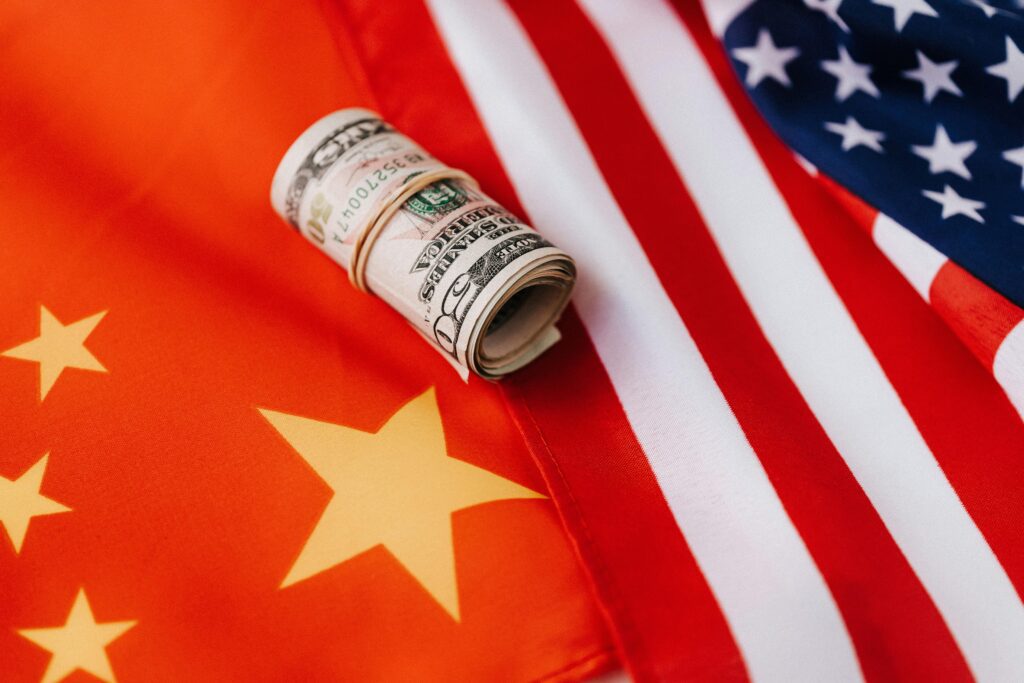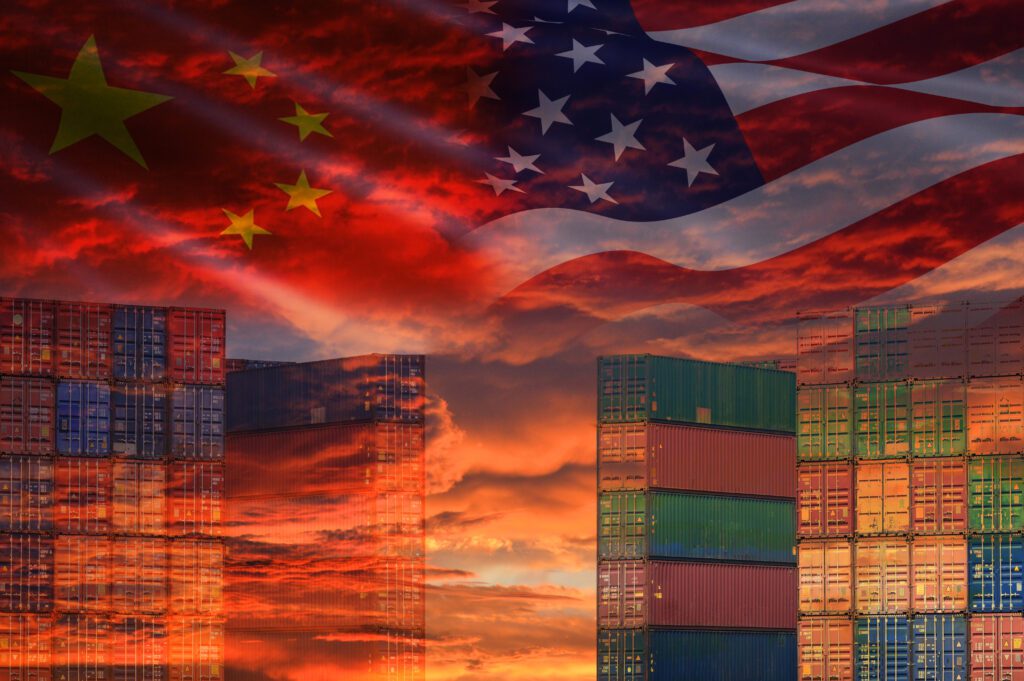
The trade war initiated by the United States under the Trump administration in 2018 remains one of the most influential events in modern global economics.
What began as a targeted effort to correct perceived trade imbalances with China soon expanded to include key U.S. trading partners such as Canada and Mexico. By 2025, its repercussions continue to shape international commerce, highlighting the delicate equilibrium between national economic interests and global cooperation.
Understanding The U.S.-China Trade Wars
At its core, a trade war revolves around the strategic use of tariffs—taxes imposed on imported goods. These measures serve to protect domestic industries, discourage reliance on foreign products, or pressure another country into altering its trade policies. The dynamic can be likened to a tug-of-war, where nations wield economic tools to gain leverage, often leading to retaliatory actions that escalate tensions.
Origins of the U.S. Trade War
The Trump administration launched the trade war based on multiple factors:
- Trade Imbalances: The U.S. had maintained a persistent trade deficit, particularly with China, where imports vastly exceeded exports. Similar concerns were raised regarding trade relationships with Canada and Mexico.
- Unfair Trade Practices: American officials accused China of intellectual property theft, forced technology transfers, and currency manipulation. Allegations also emerged that existing agreements with Canada and Mexico disproportionately benefited those countries at the expense of American workers.
- Domestic Job Protection: The administration sought to bolster American manufacturing by making foreign goods more expensive, encouraging domestic consumption and production.
U.S. Strategy: Tariffs as Economic Leverage
To achieve these objectives, the United States imposed wide-ranging tariffs:
- China: Beginning in 2018 with a 10% tariff on selected Chinese imports, these levies expanded dramatically. By 2025, near-universal tariffs exceeded 100%, covering nearly all Chinese exports.
- Canada & Mexico: By 2025, steep tariffs had been imposed on imports from both nations, reshaping regional trade relations.
- Steel & Aluminum: Tariffs on these materials targeted multiple trade partners, including Canada and the European Union, under the guise of national security concerns.
Retaliatory Measures: Global Response
The imposition of tariffs is rarely a one-sided affair in international trade. Countries targeted by these measures often respond in kind, imposing their own tariffs on goods imported from the initiating country.
This is a natural defensive mechanism, aimed at both inflicting economic pain back on the initiator and protecting their own domestic industries from the negative effects of the initial tariffs. When the U.S. placed tariffs on Chinese goods, China didn’t simply absorb the cost. It strategically targeted American exports, particularly in sectors like agriculture (soybeans, pork) and manufacturing (automobiles), where the U.S. had a significant presence. This created hardship for American farmers and manufacturers who suddenly found their products more expensive in the Chinese market, leading to reduced sales and potential job losses. Similarly, Canada and Mexico, after being hit with U.S. tariffs, retaliated by imposing their own duties on a range of American goods.
It meant that American products, from certain agricultural goods to specific manufactured items, became more expensive for Canadian and Mexican consumers and businesses, potentially reducing demand for them and harming American exporters. This cycle of tit-for-tat tariffs is the core of a trade war, with each new round of tariffs escalating the economic pain and uncertainty for all involved.
Impact of the Trade War
The effects of the trade war extended beyond immediate trade disruptions, influencing broader economic, political, and diplomatic spheres:
Impact on the U.S.:
- Higher Consumer Prices: Tariffs increased costs for imported goods, passing financial burdens onto American consumers.
- Industry Struggles: Businesses reliant on global supply chains saw rising operational expenses, affecting competitiveness.
- Mixed Employment Results: Some sectors benefited, while others faced job losses due to diminished export opportunities.
Impact on China:
- Export Decline: Tariffs weakened China’s export-driven economy, forcing a pivot toward domestic markets.
- Heightened U.S.-China Tensions: Trade disputes intensified political and diplomatic friction.
Impact on Canada & Mexico:
- Trade Disruptions: Supply chains were disrupted, particularly in agriculture and auto manufacturing.
- Political Strains: Leaders criticized U.S. trade policies as detrimental to regional cooperation.

The Global Context
Disruption of Global Supply Chains
For decades, globalization facilitated the emergence of highly specialized supply chains, allowing businesses to source materials and manufacture products in cost-effective locations. The trade war dismantled this efficiency, forcing industries to rethink sourcing strategies.
Impact on Businesses:
- Higher Operational Costs: Companies that relied on imported raw materials from tariffed nations suddenly faced higher expenses, cutting into their profit margins.
- Forced Regional Adaptation: With tariffs making certain trade routes costly, manufacturers relocated production to more politically stable or economically viable regions. This sparked investment in Southeast Asian countries like Vietnam, as well as Mexico and India.
The Rise of “Friendshoring”
Instead of focusing purely on cost-effectiveness, multinational corporations began shifting production toward countries with similar political interests. This marked a transition from globalization to strategic economic alliances, fundamentally altering the world’s trade map.
Increased Uncertainty & Reduced Investment
The unpredictability of tariff policies made it difficult for businesses to plan for the future, leading to delayed projects, reduced foreign direct investment, and economic slowdowns.
Effects on Business Strategy:
- Hesitation in Large-Scale Investments: Companies uncertain about future trade policies scaled back expansion plans, particularly in heavily affected industries like technology, automotive, and manufacturing.
- Market Volatility: Stock markets experienced turbulence as investors reacted to sudden tariff announcements and retaliations between nations.
Global Trade Agreements Under Pressure
The uncertainty also impacted international trade negotiations. Countries started favoring bilateral trade agreements instead of relying on multilateral institutions like the WTO, making trade more fragmented.
Slower Global Economic Growth
The trade war wasn’t just an issue for the U.S., China, Canada, and Mexico—it reduced trade volume globally, dragging down GDP growth in multiple regions.
IMF & World Bank Warnings:
Leading financial institutions consistently downgraded global growth forecasts, citing the trade war as a major risk factor.
- Reduced Productivity: Countries reliant on trade experienced economic contractions.
- Weakened Emerging Economies: Nations that depended on exports suffered as demand for their goods decreased due to tariff-induced trade disruptions.
Increased Inflation
A direct consequence of tariffs is higher import costs, which translates into price increases for everyday consumers.
Effects on the U.S. and Other Nations:
- Rising Prices for Goods: Higher costs on imported components, food, and industrial products fueled inflation.
- Central Bank Challenges: Inflationary pressure made it harder for the Federal Reserve, European Central Bank, and other monetary authorities to balance interest rate policies.
Inflation & Income Inequality
Lower-income populations were disproportionately affected by rising costs, as essentials like food, clothing, and electronics became more expensive. This exacerbated wealth inequality in many regions.
Impact on International Institutions
The trade war posed existential questions for institutions like the WTO, whose authority was tested as countries increasingly bypassed global trade regulations.
The WTO’s Struggles:
- The U.S. blocked appellate appointments, reducing the WTO’s ability to resolve disputes.
- Nations favored unilateral trade policies, leading to a fragmented trading system.
- Multilateralism weakened, making way for economic nationalism.
IMF & World Bank Reactions:
These organizations repeatedly warned that prolonged trade conflicts could weaken global economic resilience.
Shifting Trade Relationships & Economic Blocs
With traditional trade routes destabilized, countries strengthened regional alliances to mitigate risk.
Key Shifts in Global Trade:
- Asia-Pacific Integration:
- The Regional Comprehensive Economic Partnership (RCEP) allowed Asian nations to deepen trade ties, reducing reliance on the U.S.
- China expanded its trade partnerships with Africa, Latin America, and the Middle East.
- BRICS & Alternative Blocs:
- BRICS nations (Brazil, Russia, India, China, South Africa) strengthened economic cooperation to counteract Western trade policies.
- EU & Post-Brexit Adjustments:
- Europe refined its trade strategies, focusing on internal economic resilience and stronger relations with Asian markets.
Geopolitical Implications
Beyond economics, the trade war intensified political tensions between major powers, affecting diplomacy, technology competition, and security strategies.
U.S.-China Tech Rivalry:
- Sanctions on Chinese Tech Firms: The U.S. restricted companies like Huawei and SMIC from accessing American technology, accelerating China’s drive for self-sufficiency in semiconductors and AI development.
- China’s Response: Investment in domestic tech innovation surged, with major funding directed toward chip manufacturing and quantum computing.
Global Political Realignment:
- Countries were forced to pick sides, aligning either with the U.S. or China.
- Technology decoupling: The U.S. pushed for restrictions on Chinese technological influence.
- Strategic Military Alliances: The trade war reinforced geopolitical divisions, particularly in the South China Sea and Indo-Pacific region.
2025: Where the Trade War Stands
Fast forward to 2025, and the dust of the initial trade war hasn’t entirely settled. Many of the tariffs imposed by the U.S. remain in place, particularly in strategically important sectors like semiconductors and green technology, signaling a continued focus on protecting domestic industries. Political shifts within the U.S. haven’t fundamentally reversed this protectionist stance.
Meanwhile, China continues its efforts to become more self-reliant in key technologies and to forge stronger trade links with other nations. The global trade landscape has become more fragmented, with countries increasingly forming regional blocs and prioritizing strategic alliances.

